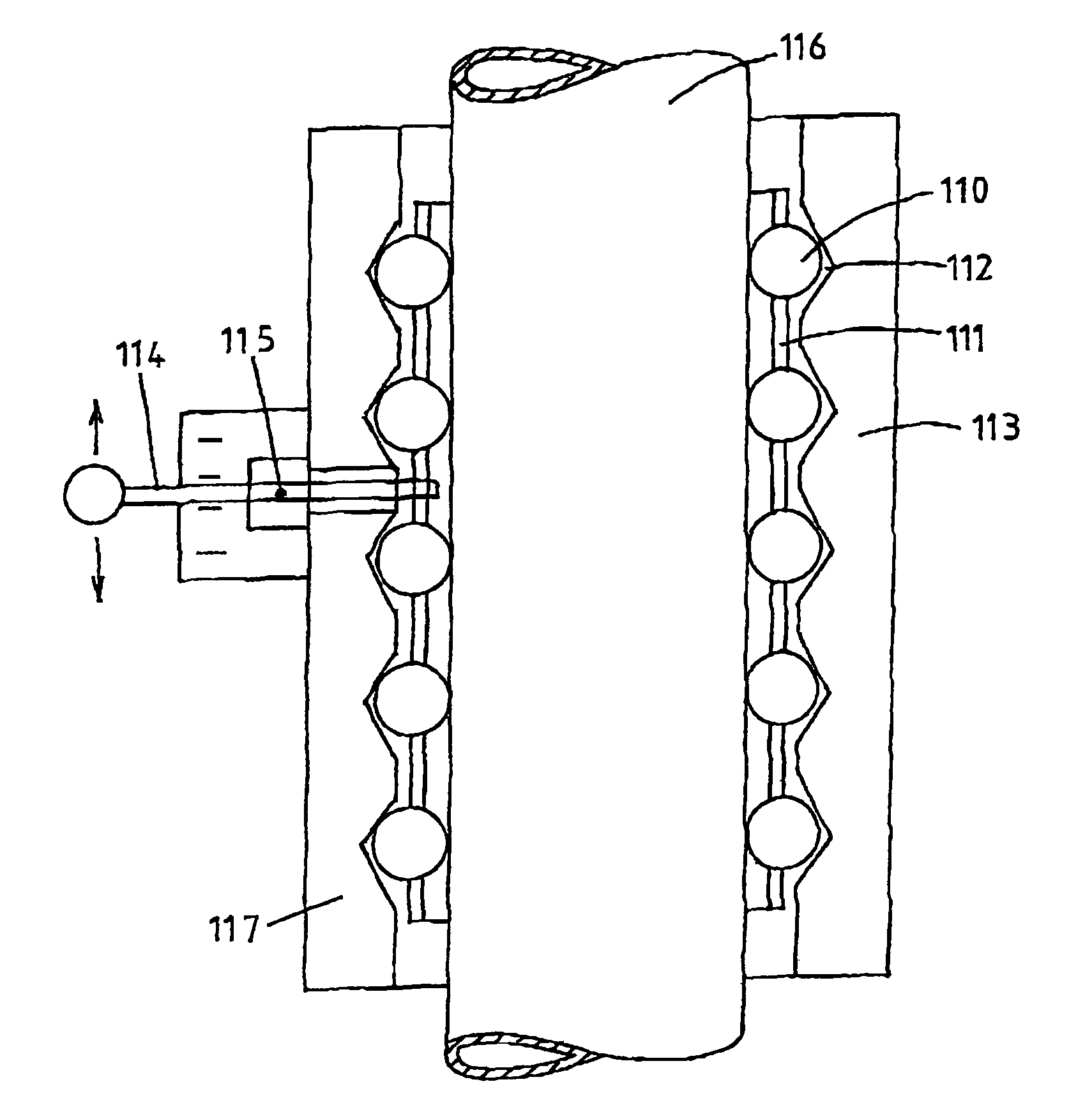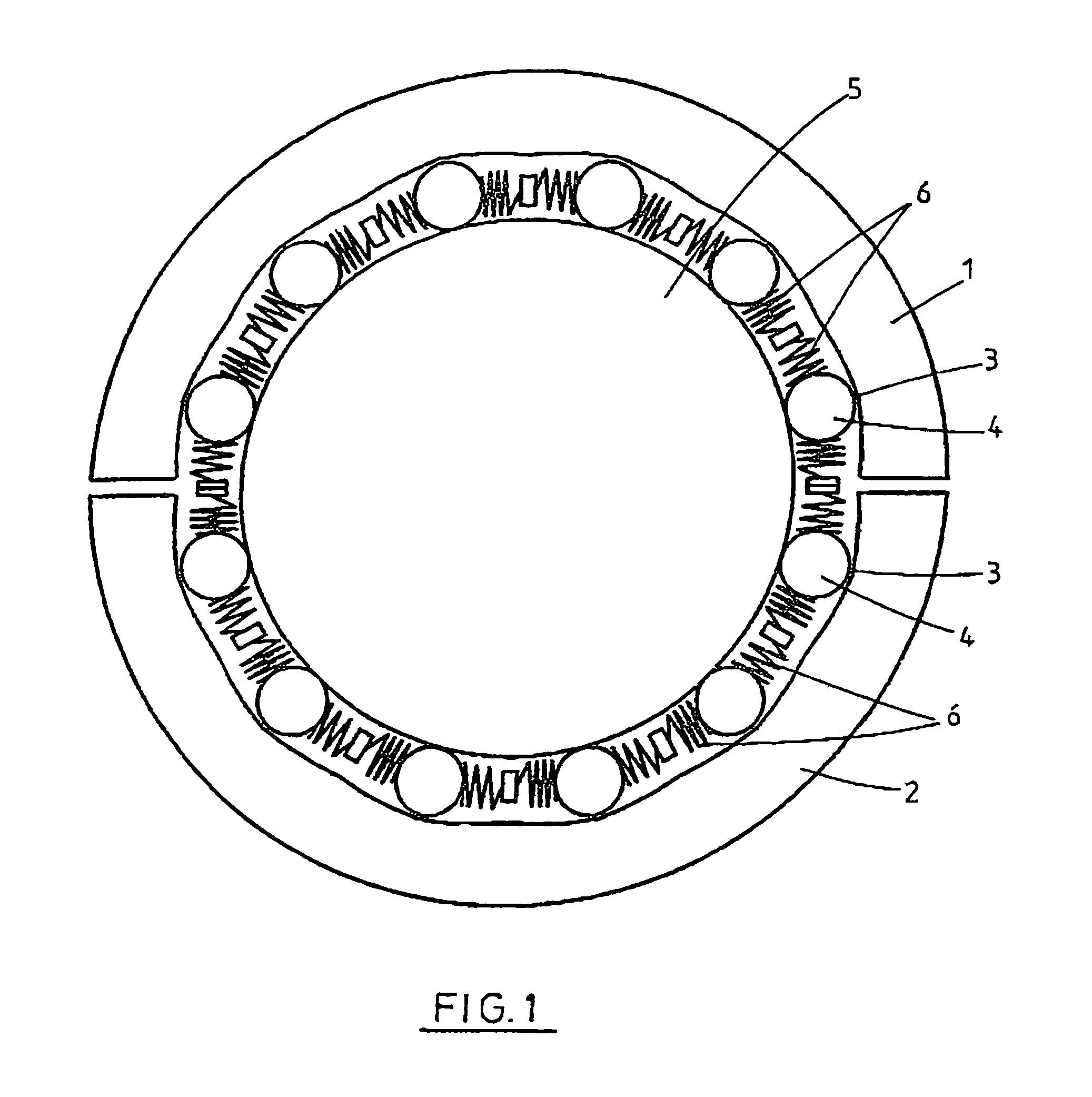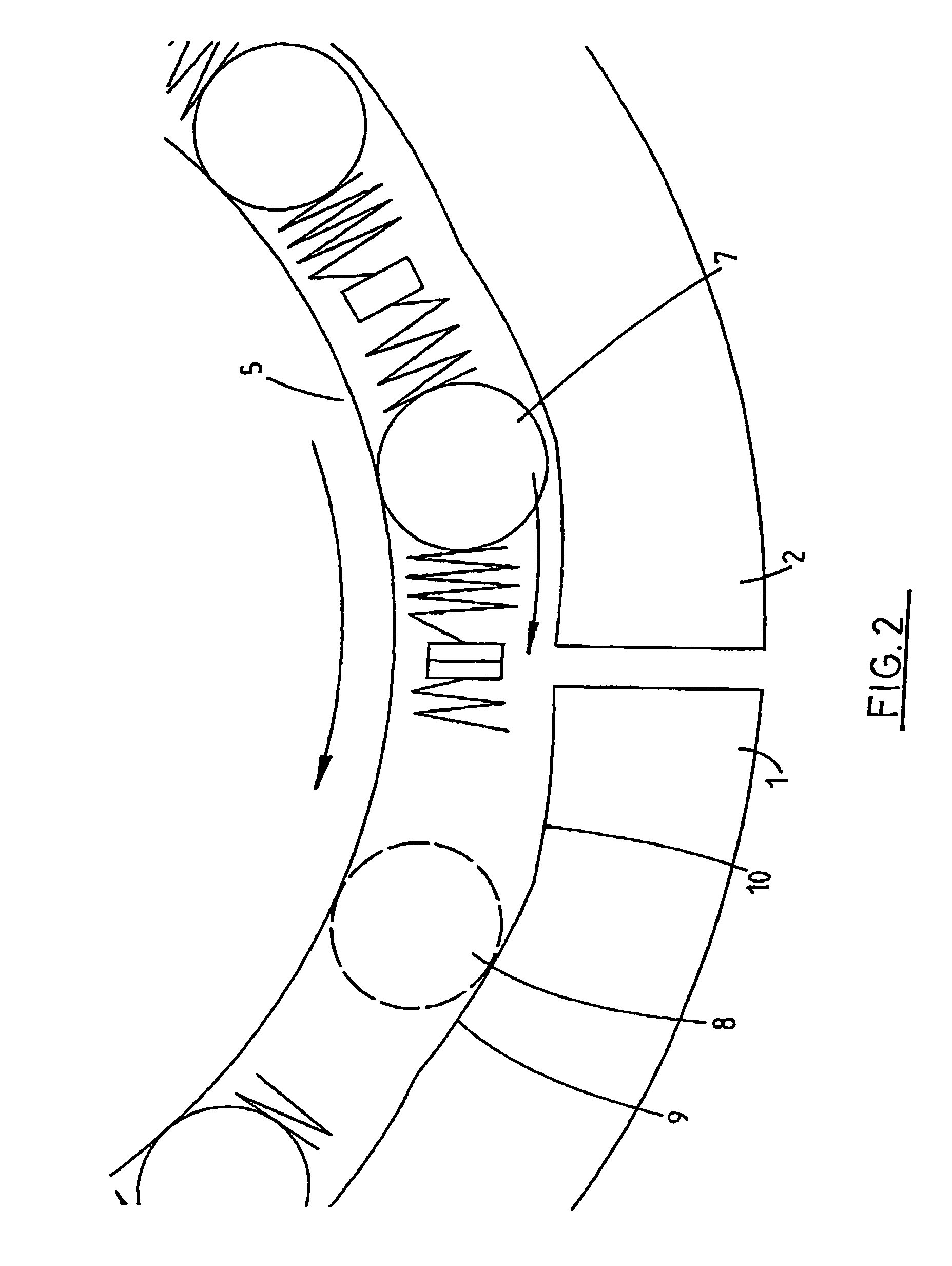Gripping or clamping mechanisms
a technology of clamping mechanism and clamping rod, which is applied in the direction of interlocking clutch, coupling, borehole/well accessories, etc., can solve the problems of reducing the advantage gained from any surface coating or treatment, reducing the life of the drill string, and affecting the operation of the clamping mechanism. , to achieve the effect of improving the gripping or clamping mechanism
- Summary
- Abstract
- Description
- Claims
- Application Information
AI Technical Summary
Benefits of technology
Problems solved by technology
Method used
Image
Examples
Embodiment Construction
[0089]FIGS. 1 and 2 illustrate the concept of the clamping mechanism of the invention. Jaws 1 and 2 are provided with wedge shaped recesses 3 having rollers 4 positioned therein. Jaws 1 and 2 may be moved apart so that a tubular member 5 may be moved laterally into the jaws. Jaws 1 and 2 may be pivotally connected together at one end to enable the jaws to open and close or the jaws may be translated apart and forced back together. Although two jaws are shown in FIG. 1 it will be appreciated that 3 or more jaw segments could be used.
[0090]Rollers 4 are biased apart by springs 6. When jaws 1 and 2 are closed around a tubular member 5, as shown in FIG. 1, rollers 4 are initially located at the apex of recess 3 (see roller 7 in FIG. 2). When the tubular member 5 is rotated rollers 4 are urged by tubular member 5 in the direction of rotation of tubular 5.
[0091]The dashed roller 8 in FIG. 2 illustrates the position adopted by the roller when urged to the left by rotation of tubular member...
PUM
 Login to View More
Login to View More Abstract
Description
Claims
Application Information
 Login to View More
Login to View More - R&D
- Intellectual Property
- Life Sciences
- Materials
- Tech Scout
- Unparalleled Data Quality
- Higher Quality Content
- 60% Fewer Hallucinations
Browse by: Latest US Patents, China's latest patents, Technical Efficacy Thesaurus, Application Domain, Technology Topic, Popular Technical Reports.
© 2025 PatSnap. All rights reserved.Legal|Privacy policy|Modern Slavery Act Transparency Statement|Sitemap|About US| Contact US: help@patsnap.com



